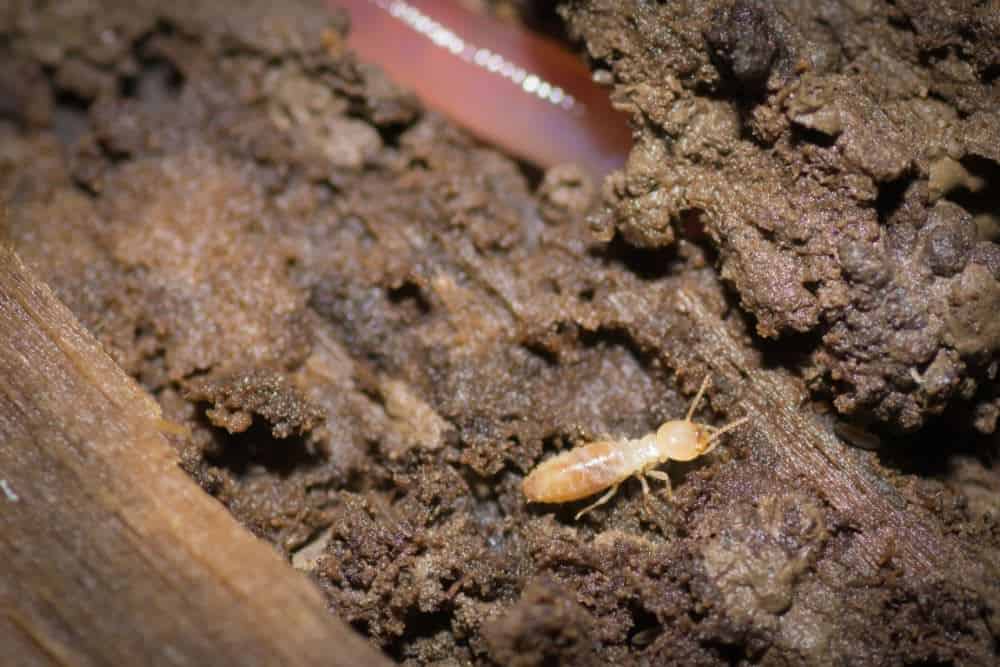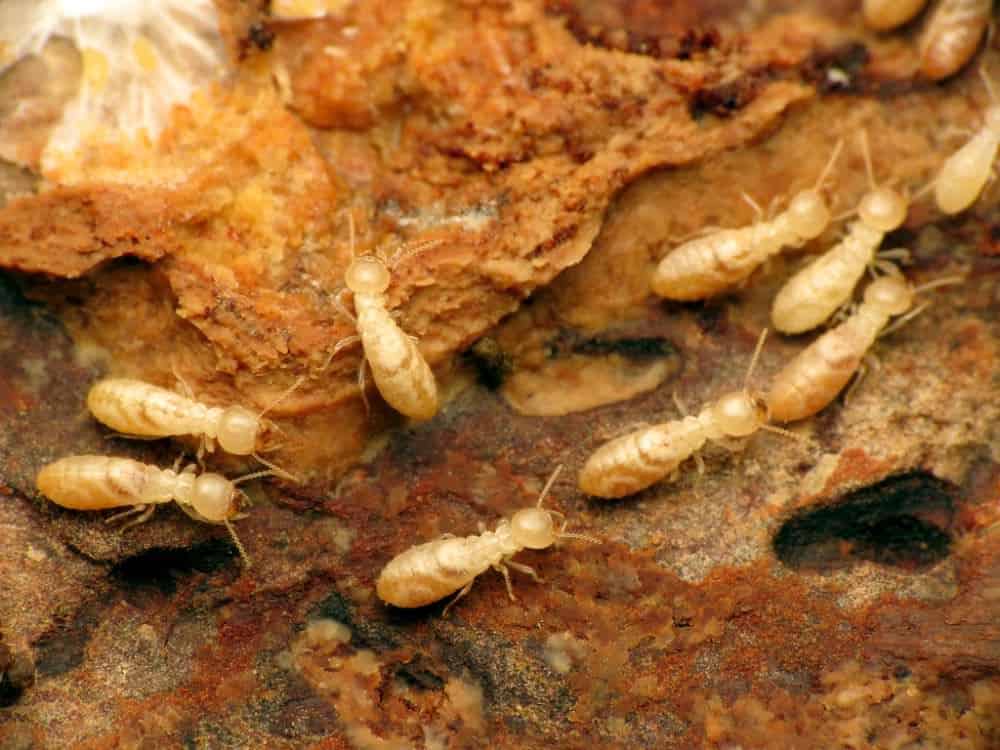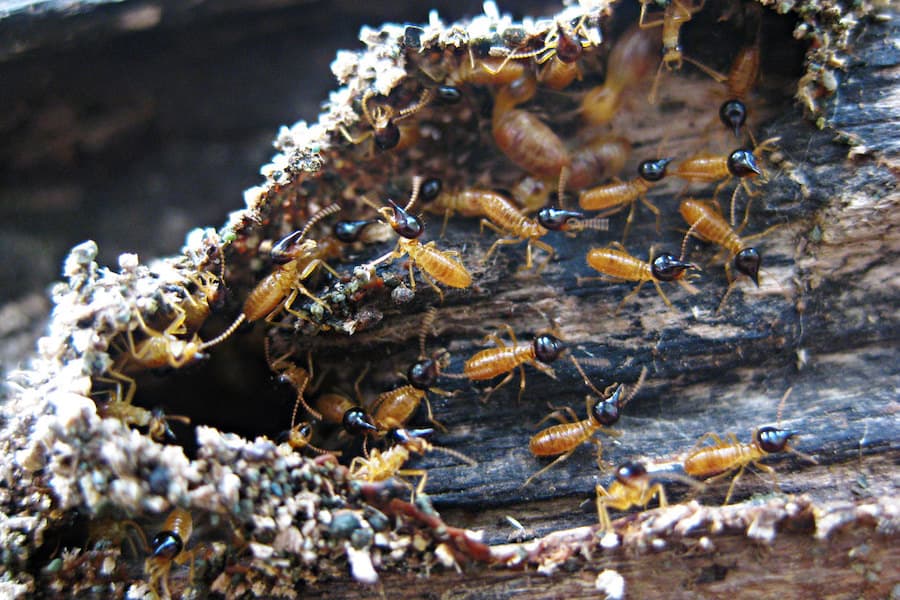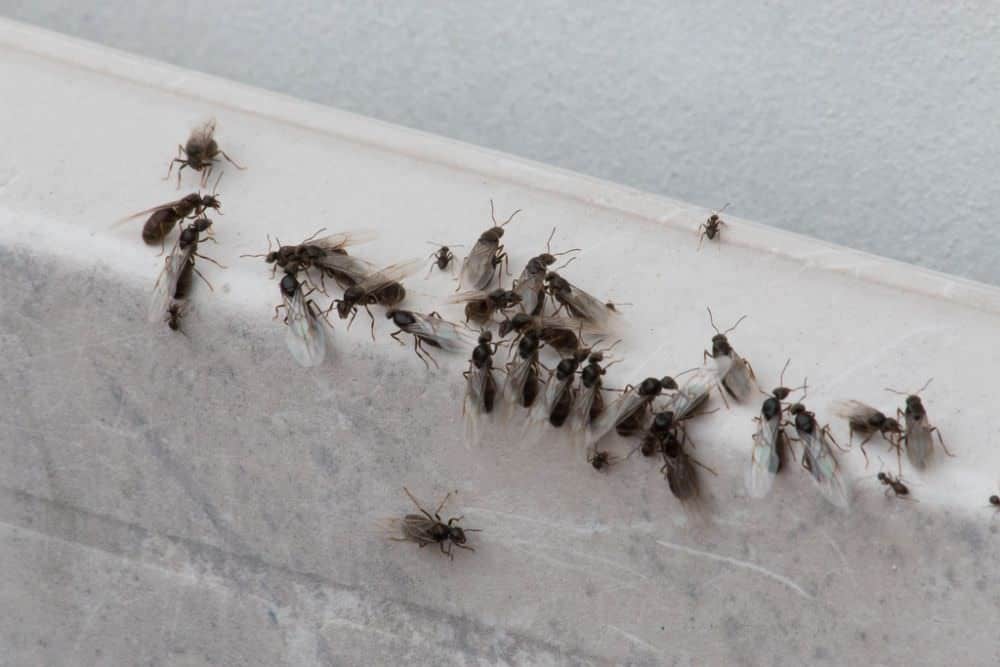Termites In The House
Termites are small but troublesome insects. These pests live in large colonies and like to feed on the cellulose found in wood and timber. Finding signs of termites in the house can certainly be a stress-inducing experience for homeowners. These ravaging insects could cause thousands of dollars worth of structural damage over time.
In this article, we hope to shed some light on these nasty home invaders. We will discuss how to identify a termite problem in the home. We’ll also cover how to get rid of them, and some measures you can take to prevent them from returning.
How Do Termites Get Inside the House?
Termites tend to swarm in spring. During this time, the young, winged and fertile termites leave their former colonies to find mates and establish new homes.
These swarming termites head into the world looking for a suitable base. The environment they seek needs to offer a viable source of food and shelter. Our houses offer both in abundance.
Because termites are so small, they can enter our homes through the tiniest of cracks. Once inside, they breed swiftly and establish a new colony. They are aided by the easy food source and lack of predators.
In the case of subterranean termites, they enter homes via the foundations. As the name suggests, they live underground.

There are five types of termite commonly found in and around homes in the U.S.
- Drywood termites
- Subterranean termites
- Dampwood termites
- Conehead termites
- Formosan termites
The first two are the ones which trouble us here in the U.S. most often. Because of this, we will now look at these two species more closely.
Drywood Termites
Drywood termites form extremely large colonies and are the most destructive to wood in the United States. Since they can exist in wood that has low moisture, they can also easily migrate with shipped furniture from state to state.
These termites are distinguished by their orange-brown colored heads. In contrast, their middle section is dark brown.
These termites can get into your home in several ways. One is simply by the swarming termites flying in and finding suitable places to settle. The other, as mentioned, is that they can easily be brought in with newly acquired furniture, or even cardboard boxes that you bring into the home.
Subterranean Termites
Subterranean termites, on the other hand, need mud to survive. They form colony mounds underground, usually in the garden near the home. From these mounds, they structure mud tunnels or tubes to move around and search for food.

It is this process which brings them into the foundations under your home. From there, they can spread and infest every nook and cranny of a house. Subterranean termites are considered to be responsible for most property damage. For this reason, they are definitely the main species to look out for.
Signs of Termites in the House
There are many signs to look out for if you suspect the presence of termites in your home. Some of these signs might only become apparent after substantial damage has occurred. Other signs, however, may help you detect termites early on.
Below are some of the early signs of a termite presence in your home.
Termite “Swarmers”
A large number of termites will leave their home colonies at the same time. This mass exodus creates swarms of the flying pests. Hence the name “swarmers.”
Spotting swarms as they first appear can be an early sign that there may be a potential colony forming in the area. It is important not to mistake the termites for flying ants, who also swarm in the same way and can look quite similar. A termite’s wings are equally sized, unlike those of the ants. Their antenna are straight, whereas ants’ are bent. Their bodies are also a slightly different shape too, with the ants having a pinched ‘waist.’
Discarded Wings
The reproductive termites (also known as alates) do not keep their wings for long. Instead, they discard them soon after their initial flight. If you find piles of wings near your house this may indicate a new, forming colony in the vicinity. At this point, it may be a good idea to investigate further.

Unfortunately, in most cases, termites are usually detected after the damage has been done to a property. Some of the signs to look for are listed below.
Difficulty Opening and Closing Doors
Since termites survive through the consumption of cellulose in wood, they can dig through door and window frames. Over time, this can cause the frames to swell up or change shape, making them hard to open and close.
If this happens, it may be time to take a closer look at the wood around your home.
Swollen Floors or Peeling Paint
Swollen floors and peeling paint can be caused by water pipe leakages around the house. However, if you have ruled out this potential cause then it may be time to face up to a termite infestation.
Since termites reside in moist and dark places, living just below the surface of wooden structures is ideal. This is essentially what causes the bubbling on the surface. If this problem arises and it’s not because of water leaking, it could be a sign of termites.
Termite “Cement”
This will be found when termites set up home in any given place. They like to block up any cracks or holes with mud in order to control the light, moisture levels, and airflow within their colony.
The material they use to make these blockages looks a bit like cement.
If you are familiar with the flaws around your house, then this is something you will likely notice over time.
Termite Droppings
The nature of termite excrement can differ, depending on the type of termite. For example, subterranean termites excrete liquid. They then often reuse this liquid, mixed with dirt and debris, to make mud tubes and tunnels. Or they put waste to use as cement to block up holes and cracks. Because they re-use a lot of their excrement, large piles of it may not be found.
On the other hand, drywood and dampwood termite droppings resemble tiny pellets and can look like coffee grounds or sawdust on the floor.

The color and texture can vary depending on the type of cellulose and wood they have been eating through. This pellet form of excrement is easier to recognize and spot around the home.
We have discussed some early indications of termites, and signs of an established colony. In the next section, we will look at the steps you need to take if termites are found in your home.
What to Do If You Find Termites in Your Home
If termites are found in your home, then you have the option of attempting some DIY methods of eradicating them. If these are not fruitful, you may have to bring in the professionals to get rid of them for you. Killing termites is not impossible, but to do so effectively takes knowledge and hard work.
There are, however, some easy home DIY techniques to try. These include:
Orange Oil
Many insects and pests abhor citrus smells, and termites are one of them. Orange oil, in particular, seems to kill them effectively. However, it is a potent oil, and therefore should be handled with gloves, and syringed specifically into areas where termites are suspected to be found.
Extreme Temperatures
Despite the fact that termite activity in the home is not particularly seasonal, they do not respond well to extreme temperatures. Thus, dropping the home temperature to close to zero, or blasting them with very hot air, are both effective measures in driving out these pests.
Salt
Salt is one of those multi-purpose groceries that is found in every pantry. It can also be an effective termite killer. The key is to make a solution of equal parts salt and water which is then sprayed into places where termites are established. It should soon kill any termites it comes into contact with, since it effectively dehydrates the insects.
Cardboard Box Bait
This involves leaving a damp cardboard box near the areas where you suspect termite presence.
After several days the termites may start to migrate from the wooden structure or furniture they’re living in to feed on the box. At this point, simply take the box away and burn it. This may need to be done several times to increase your chances of killing the entire colony.
If these natural solutions to termites fail, there are also a few other options to consider. This includes:
Liquid Chemical Pesticides
These can be applied around or in the home, and are best used with the help of professionals. They help create a barrier around your property and prevent termites from getting in or out.
You may need large quantities of pesticide, however. This can be rather expensive if you have a large property.
Baiting
This involves using bait stakes around the home. They are covered in toxins that kill termites and can alert you to termite activity.
If a particular stake shows that termites are in the vicinity then you can give extra attention to that area, and take measures to make sure they are exterminated effectively.
Using Nematodes
Nematodes are tiny, roundworm parasites which feed on termites, thereby killing them from within. You can buy them over the counter or online and release them in areas that you suspect have termites.
Shop-Bought Sprays
While results can vary widely depending on the type and size of infestation, some termite killing sprays can be used effectively in the battle against an infestation.
How to Prevent Future Termites From Infesting the House
There are several steps you can take to ensure your best chances of the invaders staying out of your home. These include some simple measures, as well as some that may prove more difficult or costly.
Sunlight
This is a natural deterrent for termites, since they like dark and moist places. Keeping windows and shutters open during daylight hours is extremely important in keeping termites away.
Dehumidify
Since most termites like moist places, it is important to ensure that your home environment is not humid or damp. A non-labor-intensive way of doing this is simply purchasing several dehumidifiers for your home, especially if you live in a climate that is usually humid.
Fix Any Leaks
Damp and wet wood caused by leaking pipes or bathtubs is also a great attraction to termites. Therefore, such problems should be dealt with as soon as possible.
Storage Choices
Instead of using cardboard boxes for long-term storage purposes in the home, consider switching to plastic or metal containers. Cardboard boxes are prone to becoming damp and are a great attraction for termites looking to feed on new material.
Maintain Your Garden
Subterranean termites, in particular, reside in mud and often establish themselves outside your home. Any dead trees or timber are automatically going to act as magnets and become their choice of home.
The more trees and thick shrubs that are left unattended to, the greater the chance of termites being attracted to the vicinity.
Therefore, a small investment in maintaining your garden may go some way toward saving you some serious cash in the long run.
Consider Your Home’s Foundations
If the foundations of your home are not protected against termites, the chances of an infestation are higher. Making changes to the foundations is probably the most invasive measure to consider, depending on the age of your house.
The majority of newer properties are built with waterproof sheeting placed around the foundations to prevent water damage. Some buildings have coarse soil and sand used when building the foundations. These can act as concrete and help to prevent termites from entering your home from underground.
If you have an older property without these measures in place, then you may want to consider investing in updating the foundations of your home. Unfortunately, this can be a long-term and costly solution. Therefore, it is probably best left as the last resort if other measures have failed.

Termites, like many household pests, often go unnoticed until real problems occur. Due to this, many of the signs of termite presence, such as hollowed wood, droppings, and cement, are detected only after colonies have established themselves.
Being vigilant, looking out for signs, and knowing how to combat these pests is important. It can help you deal with the problem of termites in the house before too much damage is done to your home.





